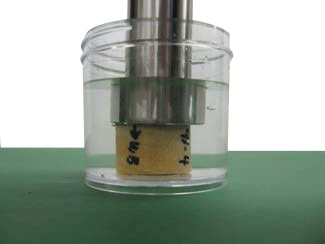DT330 – Universal zeta potential probe
DT-330 Universal Zeta Potential probe for Particulates and Porous materials
This Universal Zeta Potential probe is capable of measuring zeta potential in practically all types of heterogeneous systems, which includes Particulates and Porous materials:

- Dispersions of solid particles;
- Emulsions;
- Dispersions of porous particles when sizes up to millimeters;
- Sediments of solid particles;
- Sediments of porous particles;
- Monolith, like geological core, ceramic tile when pore size on submicron scale;
- Membranes when pore size is on scale of nanometers.
Measurement for solid Particulates is based on our patented Colloid Vibration Current method while characterization of Porous materials – our patented method that employs Seismo-electric and Electro-seismic effect. Measurement of porosity is based on our patented method with high frequency conductivity probe.
This instrument functions as DT-300 when measuring Dispersions or Emulsions,
The probe should simply touch monolith when measuring it. Picture below shows this. Therefore, the surface of the monolith must be flat with no gap between it and the probe face.

Zeta potential calculation for porous materials requires information on porosity. It can be measured with high frequency conductivity probe, as shown on the picture.
